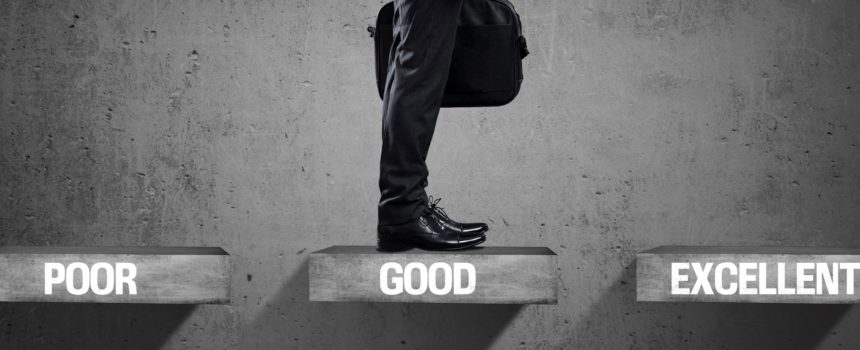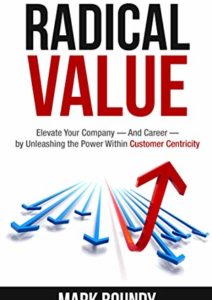The last of a 4 part series.
If you aren’t enabling a culture of continuously improving value focus, you’re falling behind some competitors.
In part one of this series, I introduced the idea that customer-perceived value is the kernel within “customer focus” that actually moves customer decisions, and you need to focus sharply on value. I also identified three domains in which any journey toward value focus should operate. In the second article, I discussed one domain, organizational alignment around customer value, and described successive achievement levels. Part 3 dealt with the second domain: your organization’s selling capability.
This installment: The enablement domain, which is any activity meant to improve the performance of the sales function. Generally, it encompasses talent strategy, training, coaching, and content services. Your customer value focus journey needs to enable continuous improvement whether you have a formal enablement function in your organization or not.
Enablement improves with a number of services incorporated, depth of each service, and breadth: who is included. More importantly, maturity increases with transitioning from event focus, to process-focused, to closed-loop process.
- An event focus might look like “train and coast”, or “coaching sprint” then coast.
- Process looks like ongoing training or developing a consistent coaching cadence.
- Loops close when coaching drives changed training when sales insights are captured for improved content and product innovation. The more loops closed, the more elite.
One way the journey from average to good starts is when a company realizes that front line sales managers performing as “super salespeople” or “deal saviors” doesn’t scale — or build bench strength — nearly as well as coaching everyone to save their own deals. Another key indicator of maturity is the organization’s discounting process and behavior, from subjective/”squeaky wheel” management to objective, value-focused and tracked/analyzed
Like the other articles in this series, I describe telltale indicators of whether you’ve moved beyond average to Good, Great, or Elite, describing characteristic behaviors at each level.
I’m also grafting in some of the research basis for these three performance levels, using a highly respected research house. Of the 12 organizational behaviors of world-class sales organizations identified by CSO Insights in their 2019 Sales Best Practices Study, (SBPS) five of them belong in this domain.
I’ll plug them in below with the note “CSOi 2019 SBPS”, then their description of the behavior they surveyed for.
Good Enablement Culture
Going from average enablement to good encompasses several capability upgrades.
First, and perhaps the most important aspect of up-leveling from average to good: Spend time turning front line sales leaders into coaches, rather than just being super salesmen or deal saviors. Deal savior-ism doesn’t scale or build bench strength, and good companies know it. Coaching is the difference between “train and coast” and achieving behavior change. (CSOi 2019 SBPS: Our sales managers effectively coach salespeople to higher levels of performance).
I’ve mentioned it elsewhere, but it bears repeating here. In good companies, the enablement function becomes aligned with both sales and marketing, with a jointly-developed planning and execution cycle.
Additionally, to avoid the cost of bad hires, organizations focus on more effective hiring to get the right people in the right roles (CSOi 2019 SBPS: Our talent strategy ensures we have the people capability to achieve our business goals).
As I described in part 3 on sales capability, at a good level, discounting is often still at an immature level. Discounts are awarded based on subjective criteria such as salesperson nervousness. Discounting is typically not even tracked, but there is a clear anecdotal pattern indicating that price exceptions are poorly controlled. Enablement at the “good” level often considers discounting out-of-scope.
Great Enablement Culture
Great enablement cultures understand the folly of “train and coast”. Learning starts to be viewed as an integral aspect of corporate life.
Coaching capability is put in place to ensure behavior change. Great companies realize that coaching isn’t a project, but an ongoing cadence…building into something that anchors a personal growth culture (CSOi 2019 SBPS: Our culture supports the continuous development of customer-facing professionals)
(CSOi 2019 SBPS: We continually assess why top performers are successful)
I’ve mentioned it elsewhere, but it bears repeating here. In good companies, the enablement function becomes aligned with both sales and marketing, ideally with a jointly-developed long-range plan for developing organizational capabilities. They share a vision for a continuous growth culture, emphasizing predictive selling behaviors. After a while in this mode, the organization develops a tolerance for and my appreciation for continuous change.
Great companies manage and coach to predictive behaviors, not trailing results indicators, and develop analytics that track the big hitters. (CSOi 2019 SBPS: We have a clear strategy for leveraging data (operational, customer) as an asset for sales
With the adoption of sales methodology that aligns with personas & customer journeys, forecasts can become more rigorous. This happens when forecast probability is based on opportunity fit and customer engagement in the buying process, not just qualification and progress through a selling process (the norm at good companies).
Discounting/price exceptions mature a little at great companies. There is an orderly process, often strictly followed, but there is often still no – or at least woefully inadequate tracking of “discount spend”. It’s typical that senior executives suspect, but can’t measure the problem because there are no metrics.
Elite Value Enablement Culture
Elite enablement cultures drive radical improvement in results by placing customer value at the hub of their strategies.
Elite enablement cultures close a bunch of loops.
- They not only track sales performance analytics but track coaching effectiveness.
- Training and coaching everyone who touches the customer to uncover a wider set of value gaps, which feeds team selling, marketing efforts, and produces insightful product development ideas.
- They track customer perceived value by outcome, to inform product training, content marketing, opportunity scoring.
Tracking customer value by opportunity informs a robust, objective discounting/price exception discipline – or value-based pricing for custom and semi-custom offers. Opportunity value also informs highly accurate forecasting, as the difference between value and price is a measure – in dollars –of customer preference.
Where Are You in Your Journey? And How Far Would You Like to Go?
Enablement capability is one of three domains in your journey to elite value focus. It goes hand-in-hand with the other two: Company-wide alignment around value and Value-focused sales capability…the topics of the prior two articles. I will go into much greater depth in my upcoming book, Radical Value, coming out in March (but I’m offering advance copies to reviewers).
Comment below, like, and/or share. As always, reach out if you have more in-depth questions, or read the accompanying articles…then call me. We can talk about where you are in your journey and where you’d like to go next.
To your success!





Comments (8)
Great
This increase my learning
Very helpful.
wow, the article to boost your mind on learning your business.
excellence
Very True!
Thanks….I enjoyed reading it.
cool